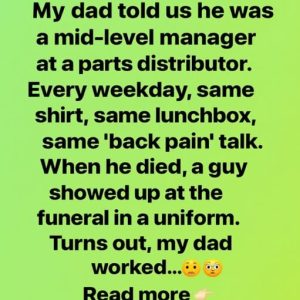Trump has proposed giving most Americans a $2,000 “tariff dividend” — payments to be funded from revenues generated by newly imposed import tariffs. The idea is politically framed as delivering a direct financial benefit to working- and middle-class households, especially those below a certain income threshold, while positioning tariffs as a revenue stream that can “give back” to the public.
Supporters appreciate the simplicity of the notion: tariffs raise “extra” revenue, and that money is returned to citizens — bypassing bureaucracy and delivering an instant, tangible benefit. That message appeals particularly to voters concerned with living costs, economic inequality, or distrustful of long, complicated social-welfare programs.
The Reality Check: Tariff Revenue Isn’t Enough to Support the Promise
In theory, tariffs do generate money. In fiscal 2025, the U.S. Treasury reportedly collected about US $195 billion in customs duties — a sharp jump compared with prior years. That appears substantial. However, the scale of the proposed dividend — $2,000 per eligible person — quickly outpaces what that revenue can realistically support.
Analysts at institutions such as Yale Budget Lab and Tax Foundation estimate that if the dividend were extended to all qualifying adults (and perhaps children), the cost could reach several hundred billion dollars — with some estimates around $300–600 billion depending on parameters. Meanwhile, even optimistic long-term projections suggest tariff revenues will cover only a fraction of that cost, and those projections assume no negative economic feedback.
Moreover, higher tariffs come with economic trade-offs: import costs rise, domestic producers may suffer, and reduced consumption or international retaliation could undercut some revenue gains. In short: the underlying math simply does not support the claim that tariffs can reliably fund a large, recurring “dividend” for millions of Americans.
Legal and Institutional Hurdles: Tariffs ≠ Automatic Checks
Beyond revenue, the proposal runs into serious structural and constitutional barriers. First: there is no existing law authorizing the government to distribute a “tariff dividend” — the payments would require new legislation. That means Congress must design and pass a bill spelling out eligibility criteria, distribution mechanisms (checks, tax credits, or otherwise), funding logic, oversight, and more — a complex process without any consensus currently.
Second: the legal basis for many of Trump’s tariffs is under challenge. Several courts have already questioned whether the president exceeded his authority by using emergency/powers laws to impose sweeping global import taxes without congressional approval. The U.S. Supreme Court has expressed skepticism in hearings. 1 If the Court ultimately rules against the administration, a large portion of tariff revenue could be voided — meaning funds earmarked for the dividend could vanish, and past collections could even be subject to refund orders.
This legal uncertainty means that even before lawmakers weigh in, the financial foundation underpinning the dividend is unstable. The idea depends not just on tariffs collecting revenue, but on those tariffs surviving judicial review — a substantial gamble.
Political and Fiscal Pushback: Why Even Allies Are Wary
Politically, the plan has already encountered resistance — including from some within Trump’s own party. Several lawmakers have voiced concern about the cost, given the nation’s high debt and large deficits. Many argue that tariff revenues should be used to reduce deficits rather than dispense as consumer payouts.
Fiscal-watchdog organizations likewise caution that treating tariff income as a “free pot of money” for direct payments is misleading. Tariff funds are typically part of general federal revenue and subject to broader budget constraints; funneling them into a large-scale rebate risks undermining fiscal stability.
Moreover, some experts argue the tariffs themselves — by raising costs on imported goods — may disproportionately burden low- and middle-income Americans, undermining the very constituencies the dividend is meant to help.
Implementation Uncertainty: Vague Promises, Few Details
Even supporters of the tariff dividend have acknowledged that the plan lacks concrete implementation details. As of now, it is unclear:
-
Who would qualify (income cutoffs? household composition? children? non-filers?).
-
Whether payments would come as direct checks, tax credits, or other forms. Treasury officials have suggested a variety of possibilities, but emphasized nothing is finalized.
-
How the payout schedule would align with tariff revenue flows — whether it would be a one-time or recurring payment.
That vagueness allows for rhetorical flexibility — which may be politically useful — but it also means that current public promises bear little resemblance to an enforceable policy plan. For households trying to budget or plan, the proposal remains effectively hypothetical.
Conclusion: A Promise Suspended in Political Limbo
The $2,000 tariff dividend proposed by Trump highlights a familiar tension in political messaging: it translates complex economic policy into a simple, emotionally appealing promise. Tariffs = revenue; revenue = checks. That logic is easy to grasp and — for many — thrilling.
But the reality is far messier. The numbers don’t add up: tariff revenue, even in an optimistic scenario, falls well short of the cost of a full-scale payout. Legal challenges threaten the very foundation of that revenue. Congress would need to craft new legislation from scratch. Vital implementation details remain undefined. And economic side-effects — higher consumer prices, potential retaliation, lower overall economic output — may undercut the benefits while leaving many Americans paying more.
In short, the $2,000 dividend remains a political proposition — a headline — rather than a policy ready to be delivered. Until the courts weigh in, Congress acts, and a firm plan is drafted — with transparent funding mechanisms, eligibility rules, and distribution logistics — the offer remains speculative. Families hoping for an extra check should understand: this is not a guarantee, but a bargaining chip; not a budget item, but a promise.



